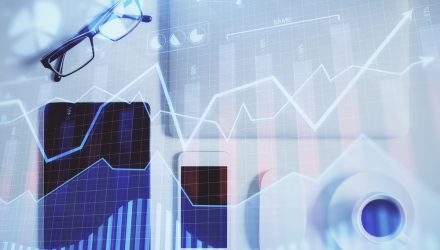Sustainable investing offers another way to manage risk in portfolios without limiting performance. In fact, over a one-year period, the S&P 500 ESG index has returned 20.25%, while the S&P 500 index has only had returns of 16.39%, according to S&P Dow Jones Indices.
One challenge with sustainable investing is that ESG scoring is primarily based on historical information. Data on issues such as greenhouse gas emissions, labor practices, and board composition may help identify today’s ESG leaders and laggards, but those rankings don’t necessarily reveal how companies might respond to sustainability challenges and opportunities in the future, according to FlexShares.
Thus it is important to look at both a company’s ESG track record and indicators of its ability to handle future sustainability issues.
There are three methods that can help gauge how companies are positioned relative to sustainability issues over the long term.
First, analyzing future carbon risk. Climate change is forcing the world to transition to a low-carbon economy. How this transition might hurt or help a company’s performance depends on its exposure to climate- and carbon-related risks, according to FlexShares.
FlexShares’ ESG & Climate strategies start with historical analysis of a company’s carbon intensity by measuring exposure to fossil fuel assets like oil, gas, and thermal coal that may become “stranded” in the future, as well as carbon footprint, as measured by greenhouse gas emissions.
Second, emphasizing corporate governance, strong corporate governance is critical for financial management, according to FlexShares. It can also signal how effectively a company is managing sustainability issues.
Governance indicators include management’s identification of sustainability issues that represent material risks or opportunities; a clear oversight framework for managing those issues, and disclosure of key metrics; and adherence to best practices in financial reporting, board independence, and shareholder rights.
Third, using a consistent, forward-looking risk assessment framework for all ESG issues.
The recommendations from the Task Force on Climate Related Financial Disclosures (TCFD) established a series of best practices for companies to manage and mitigate their climate-related risks, according to FlexShares.
The core elements of this framework examine a company’s governance and oversight of climate risk; acknowledge the climate-related risks and opportunities the company has identified, and describe the company’s strategy for resiliency; how a company is identifying and managing risks related to their business; and disclosure of metrics and targets to manage these risks.
FlexShares offers a variety of sustainable investing strategies, including the FlexShares ESG & Climate US Large Cap Core Index Fund (FEUS), the FlexShares ESG & Climate Developed Markets ex-US Core Index Fund (FEDM), the FlexShares ESG & Climate High Yield Corporate Core Index Fund (FEHY), and the FlexShares ESG & Climate Investment Grade Corporate Core Index Fund (FEIG).
For more news, information, and strategy, visit the Multi-Asset Channel.

